Tea-Time in England: Even though the Chinese are said to have discovered drinking tea at around 2737 B.C. the British East India Company during the 17th century having a monopoly on the import of goods from outside Europe,
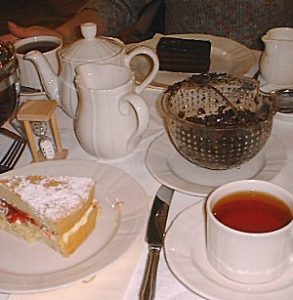
It is likely that the sailors would bring home tea as gifts. The first dated reference to tea in England is from an advertisement in 1758 by a London based newspaper.
Getting a Grip on Teacup
The first teacups used in England were imported all the way down from the Chinese Empire. Later on, these tea sets were copied and manufactured by the potters in England.
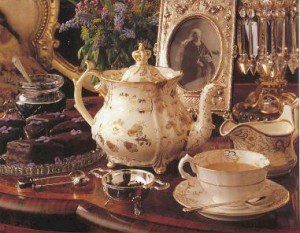
The first saucers were introduced in the country in 1700 but it took some time to come into popular use. The standard globular form of teapots took over the market of the tall oriental teapots by the year 1750. It was Robert Adam’s classical design that popularized handles.
Britain Tea-Timing
In the very beginning, tea was served in the drawing room as one of the many beverages offered. It was Anna, the 7th Duchess of Bedford (1788-1861) who started the practice of drinking tea in the afternoon (Tea-Time) with other food as a snack or meal in the 1800s.
Before the launch of tea in England, the British would have 2 meals a day: a breakfast of ale, bread and beef and a massive dinner at the end of the day around 8 P.M. in the night.
With such a long gap between the meals, it is quite evident that Anna would experience the “sinking feeling” in the afternoon.
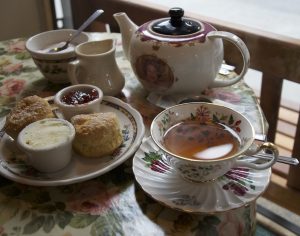
With tea breaking or Tea-Time out to be the most popular drink in England at that time, it was the most favorable choice as the beverage of this new meal.
Anna would invite her friends for an additional meal in the afternoon around 5 P.M to her rooms at Woburn Abbey.
The menu would include bread and butter sandwiches, cakes, assorted sets and of course tea. Other social hostesses soon began to invite their friends over for tea.
Meaning of High and Low tea in Britain
Traditionally, the people of the upper strata of the society would serve a “low” or “afternoon” tea at around 4 P.M. right before the modish promenade at Hyde Park, where one would find small sandwiches, biscuits, and cake.
The middle or lower classes, on the other hand, would have a “high” tea later in the day at 5 or 6 P.M. (Tea-Time) which is a more substantial meal.
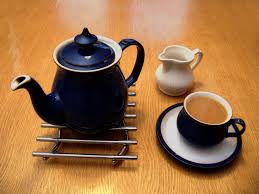
A typical high tea menu would consist of roast pork, trifles, chocolate roll, stand pie, chocolate, and lemon tarts, salmon and salad, pound cake, white and brown bread, curd tart and cheeses.
The name high and low tea derive from the height of the table on which it is served. High tea would be served at dinner table whereas low tea would not be served at the dinner table but on low tables within the drawing room.
The Duties of a Hostess
Having the butler and the footmen bring her the tools: tea caddy, the teapot, hot water and tea cups, the mistress of the house would brew the tea with her own hands.
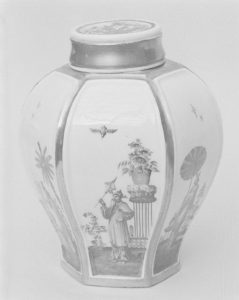
First, she would unlock the tea caddy; Tea was so very expensive that it would be kept in a secured and locked chamber to prevent the servants from stealing a spoonful of this precious dried leaves. Then the mistress would mix her favorite blend or use a pre-mixed blend.
What Time is Tea-Time in England?
For tea brewing, hot water was poured into the teapot and it was allowed to sit a few minutes to warm the pot.
Then the water would be poured out into a waste bowl, tea was placed into the pot and the boiling water was poured over the tea. It was soaked for around 5-8 minutes.
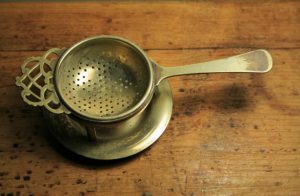
The tea leaves were strained out while the tea strainer placed atop the china as the cup of fresh tea was poured. Since tea loses flavor rapidly, only one round was made at a time.
Imported sugar from the plantations in Jamaica was also added. Scottish scones and English crumpets rapidly became associated with the snack.
By the 1840s these teas became quite grand for a buffet table to be set up with refreshments.
Tea Gardens
The English developed the idea of a tea garden after being influenced by the Dutch idea of “tavern garden teas”. It was during the reign of King Charles II, that the tea garden began.
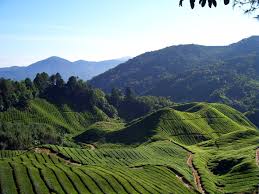
The tea garden reached the height of its fashion in the mid 18th century. Vauxhall and Ranelagh were some of the most famous tea gardens of the time.
More Info On- Sartor Restarts, Victorian Era Dishes, Diet and Dinner, Victorian Era Tea-Traditions, Victorian Era Tea-Tradition and Tea Parties